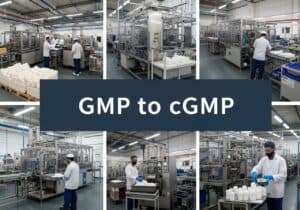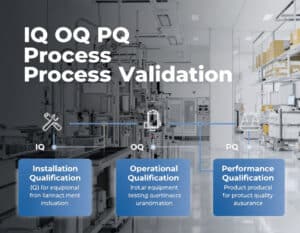
Le moderne attività di produzione richiedono risposte immediate e basate sui dati alla variabilità dell'officina e alle fluttuazioni della supply chain. I seguenti prompt di intelligenza artificiale funzionano come strumenti di ingegneria specializzati, progettati per eseguire calcoli complessi e modellazioni di scenari che sono proibitivi da eseguire manualmente o con software standard. Elaborando input operativi specifici, come dati di produzione grezzi, registri di manutenzione delle macchine o parametri di processo dettagliati, generano output direttamente utilizzabili come programmi di produzione ottimizzati, report di analisi delle cause profonde per guasti alle apparecchiature e simulazioni dell'impatto sui costi per le modifiche di processo proposte, consentendo a manager e ingegneri di prendere decisioni informate basate su analisi quantitative.
Questo elenco di oltre 25 prompt fornisce un kit di strumenti completo che affronta l'intero spettro delle responsabilità di produzione: questi sono classificati in domini critici, tra cui Pianificazione e Programmazione della Produzione per la riprogrammazione e l'ottimizzazione dinamiche; Ottimizzazione dei Processi e dell'Efficienza per il bilanciamento delle linee e la mappatura del flusso di valore; e Gestione della Manutenzione e delle Attrezzature per la programmazione predittiva e l'analisi delle cause profonde. Ulteriori categorie includono Gestione dei Costi e delle Risorse per una stima dettagliata dei costi e decisioni di make-or-buy, Reporting e Documentazione per procedure operative standard automatizzate e Analisi FMEA generazione e integrazione della catena di fornitura e della logistica per la valutazione del rischio e l'ottimizzazione della logistica, garantendo un approccio olistico al controllo operativo e di fabbrica.
Pianificazione e programmazione della produzione
[prompt_formatter title=”Dynamic Production Rescheduling for Supply Chain Disruptions” description=”Analyzes a production schedule, bill of materials, and a disruption alert (e.g., delayed shipment of a critical component). It then generates a revised production plan that minimizes delays and costs by suggesting alternative suppliers, modified production sequences, or adjusted inventory usage.” temperature=”0.7″ thinking=”high”]## CONTEXT⸻You are tasked with dynamically rescheduling production in response to a supply chain disruption. You have access to the current production schedule, the bill of materials (BOM), and a disruption alert detailing the issue (e.g., delayed shipment of a critical component). Your goal is to minimize delays and costs by suggesting alternative suppliers, modified production sequences, or adjusted inventory usage.⸻⸻## INPUTS⸻1. Current Production Schedule: {current_production_schedule}⸻2. Bill of Materials (BOM): {bill_of_materials}⸻3. Disruption Alert: {disruption_alert}⸻4. List of Potential Alternative Suppliers: {alternative_suppliers}⸻5. Inventory Levels: {inventory_levels}⸻⸻## INSTRUCTIONS⸻1. Analyze the current production schedule and identify the stages affected by the disruption detailed in the disruption alert.⸻2. Examine the BOM to determine the critical components impacted by the disruption.⸻3. Evaluate the list of potential alternative suppliers to identify viable options for the disrupted component(s), considering lead times and costs.⸻4. Assess current inventory levels to determine if existing stock can be used to mitigate the disruption.⸻5. Propose modifications to the production sequence to accommodate the disruption, ensuring minimal impact on overall production timelines.⸻6. Calculate the cost implications of each proposed change, including supplier costs, inventory usage, and potential overtime or expedited shipping.⸻7. Generate a revised production plan that incorporates the most cost-effective and timely solutions.⸻⸻## OUTPUT FORMAT⸻Provide a detailed report including:⸻- Summary of the disruption and its impact on the production schedule.⸻- List of alternative suppliers considered and the selected option(s) with justification.⸻- Proposed modifications to the production sequence and inventory usage.⸻- Cost analysis of the proposed changes.⸻- Revised production schedule with updated timelines and resource allocations.[/prompt_formatter]
[prompt_formatter title=”Multi-Objective Production Batch Size Optimization” description=”Determines the optimal batch size for a list of products by considering multiple conflicting objectives such as minimizing inventory holding costs, reducing setup times, and maximizing production throughput. It processes production data, cost parameters, and constraints to recommend batch sizes for each product.” temperature=”0.7″ thinking=”high”]## CONTEXT⸻You are tasked with optimizing production batch sizes for a list of products. The goal is to balance multiple objectives: minimizing inventory holding costs, reducing setup times, and maximizing production throughput. You have access to production data, cost parameters, and constraints.⸻⸻## INPUTS⸻- List of products: {product_list}⸻- Production data for each product: {production_data}⸻- Cost parameters: {cost_parameters}⸻- Constraints: {constraints}⸻⸻## INSTRUCTIONS⸻1. **Data Analysis**⸻ – Analyze the provided production data for each product in {product_list}.⸻ – Extract relevant metrics such as current batch sizes, setup times, and production rates.⸻⸻2. **Objective Function Formulation**⸻ – Define an objective function that incorporates the following:⸻ – Minimization of inventory holding costs using {cost_parameters}.⸻ – Reduction of setup times based on {production_data}.⸻ – Maximization of production throughput.⸻ – Consider {constraints} in the formulation.⸻⸻3. **Optimization Process**⸻ – Use a suitable optimization algorithm to solve the multi-objective problem.⸻ – Calculate the optimal batch size for each product in {product_list}.⸻⸻4. **Output Recommendations**⸻ – Provide a detailed recommendation for the optimal batch size for each product.⸻ – Include a summary of how each objective was balanced in the final recommendation.⸻⸻## OUTPUT FORMAT⸻- Recommendations for optimal batch sizes:⸻ $product_name: $optimal_batch_size⸻- Summary of objective balancing:⸻ $summary[/prompt_formatter]
[prompt_formatter title=”Predictive Bottleneck Identification in a Production Line” description=”Simulates a production process based on cycle times for each station, transfer times, and planned maintenance schedules. It identifies potential future bottlenecks and suggests proactive adjustments to machine allocation, operator assignments, or buffer sizes to maintain a smooth production flow.” temperature=”0.7″ thinking=”high”]## CONTEXT⸻You are tasked with simulating a production process to identify potential bottlenecks and suggest proactive adjustments. The simulation will be based on the following inputs: cycle times for each station, transfer times between stations, and planned maintenance schedules.⸻⸻## INPUTS⸻- Cycle Times: {cycle_times}⸻- Transfer Times: {transfer_times}⸻- Maintenance Schedules: {maintenance_schedules}⸻⸻## TASKS⸻1. **Data Analysis**⸻ – Analyze the provided cycle times, transfer times, and maintenance schedules to understand the current production flow.⸻⸻2. **Simulation Setup**⸻ – Set up a simulation model using the provided data to mimic the production process.⸻ – Ensure the model accounts for variations in cycle times and transfer times due to maintenance schedules.⸻⸻3. **Bottleneck Identification**⸻ – Run the simulation to identify stations or processes where delays are likely to occur.⸻ – Determine the impact of these bottlenecks on overall production efficiency.⸻⸻4. **Proactive Adjustment Suggestions**⸻ – Based on the identified bottlenecks, suggest adjustments in the following areas:⸻ – Machine Allocation: Recommend reallocating machines to balance the load.⸻ – Operator Assignments: Suggest changes in operator assignments to improve efficiency.⸻ – Buffer Sizes: Propose adjustments to buffer sizes to accommodate potential delays.⸻⸻## OUTPUT FORMAT⸻Provide a detailed report including:⸻- Summary of identified bottlenecks and their potential impact.⸻- Suggested adjustments with rationale for each recommendation.⸻- Visual representation of the production flow before and after adjustments, if applicable.[/prompt_formatter]
[prompt_formatter title=”Optimized Shift Roster Generation Based on Skill Matrix” description=”Creates an optimal weekly shift schedule for a manufacturing cell by taking into account employee availability, skill levels for various tasks, and production demand. The output ensures that each shift has the required skill mix to meet production targets while adhering to labor regulations and employee preferences.” temperature=”0.7″ thinking=”high”]**TASK**⸻Generate an optimal weekly shift schedule for a manufacturing cell.⸻⸻**INPUTS**⸻1. Employee Availability: Provide a list of employees with their available days and hours in the format {employee_availability}.⸻2. Skill Matrix: Provide a matrix...
You have read 12% of the article. The rest is for our community. Already a member? Accedi
(e anche per proteggere i nostri contenuti originali dai bot di scraping)
Comunità Innovazione.mondo
Accedi o registrati (100% free)
Visualizza il resto di questo articolo e tutti i contenuti e gli strumenti riservati ai soci.
Solo veri ingegneri, produttori, designer, professionisti del marketing.
Nessun bot, nessun hater, nessuno spammer.















